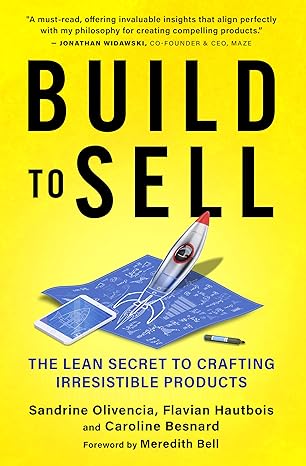Startups often dream of scaling into industry leaders, but too often, they end up suffocating under their own growth. The very agility and customer focus that made them successful can disappear as they adopt processes meant for big companies.
Toyota identified this problem early on and called it the “large company syndrome”: a set of behaviors that make businesses sluggish, bureaucratic, and disconnected from their customers. The tragedy? It doesn’t just afflict Fortune 500 firms; it can kill startups, too.
I introduced the idea of “iron law of scaleups” in my first book, The Lean Sensei. It states that as companies grow, they inevitably introduce layers of complexity that slow them down, unless they actively fight against it.
This phenomenon is at the heart of what I describe in Build to Sell, where I highlight how businesses must continually simplify and stay customer-focused to avoid losing their competitive edge. If startups aren’t careful, they risk falling into the same bureaucratic traps that slow down big corporations, but without the stability and cash reserves to survive it.
Here are the four major symptoms of big company disease, and how to keep your startup from letting them take hold.
#mc_embed_signup{background:#fff; false;clear:left; font:14px Helvetica,Arial,sans-serif; width: px;}
/* Add your own Mailchimp form style overrides in your site stylesheet or in this style block.
We recommend moving this block and the preceding CSS link to the HEAD of your HTML file. */
(function($) {window.fnames = new Array(); window.ftypes = new Array();fnames[0]=’EMAIL’;ftypes[0]=’email’;fnames[1]=’FNAME’;ftypes[1]=’text’;fnames[2]=’LNAME’;ftypes[2]=’text’;fnames[3]=’ADDRESS’;ftypes[3]=’address’;fnames[4]=’PHONE’;ftypes[4]=’phone’;fnames[5]=’MMERGE5′;ftypes[5]=’text’;}(jQuery));var $mcj = jQuery.noConflict(true);
1. Serving the process instead of serving the customer
As companies grow, they naturally put processes in place to create repeatable results. But when those processes become the priority over customer value, the company starts losing touch with its audience. Meetings, reports, and internal politics start taking priority over solving real customer problems. Decisions are made to suit internal preferences rather than customer needs, and before long, the company is operating in a bubble. I’ve seen this happen as early as 20 to 30 employees.
The treatment: staying close to your customers
Instead of crafting strategies from the top down and expecting people to execute and troubleshoot on their own, “go and see” what’s really happening in your customers’ and employees’ world. The lean philosophy teaches leaders to spend time at the “gemba”, the real place where value is created, to understand their customers’ challenges, emotional drivers, and stable preferences. Whether it’s direct user feedback, support tickets, or live observations, leaders should be listening and adapting, just like they did in the early days. They should develop a routine to lead from the ground up, even as the company grows, to stay the founder they once were while evolving into the leader they need to be.
A Serial Entrepreneur on How to Build and Scale Your Business
The practice: analyzing customer complaints
Try this simple yet powerful exercise: dedicate 30 to 60 minutes each week to analyze a recent customer complaint by reviewing actual customer conversations and support tickets with your leadership team using a structured five-column approach:
Date / Customer Complaint / Our Response / Internal Cause / Perception Gap
In the first column, record the date of the complaint to ensure consistency; repetition builds useful insights. The second column captures the complaint in the customer’s own words, avoiding bias in interpretation. The third column describes how we handled it, prompting discussion on whether we addressed it effectively, knowing that over 70% of customer churn is due to poor customer service. The fourth column identifies internal causes, highlighting which processes or decisions led to dissatisfaction; because our goal is to improve the system, one problem at a time. The fifth column is a reflection point: compare your perspective to the customer’s expectations. What was surprising or unexpected? Did you miss something? Is the market shifting?
The goal is not to jump into an action plan; knee-jerk reactions can do more harm than good. The real value is in uncovering where customer focus is lacking and where processes fall short, rather than just applying quick fixes. Be prepared: your leadership team will want immediate solutions, but resist the urge.
By following this weekly routine, you stay closely connected to customer needs while continuously refining your strategy. It becomes even more effective when a product expert or customer service manager prepares the table first, fostering deeper insights and more meaningful discussions.
From Startup to Scale-Up: 15 Sustainable Business Growth Strategies
2. Protecting silos instead of encouraging teamwork
In the startup phase, cross-functional collaboration happens naturally, with everyone wearing multiple hats. But as departments grow, they start specializing and operating in silos, each optimizing for its own priorities. Building an organization that can maintain the same level of service at scale is critical. However, as teams expand, they often become self-absorbed, losing sight of the fact that they’re all part of one value flow, serving the same customers. The result? Internal friction, wasted effort, and slow execution, all of which ultimately hurt the customer.
The treatment: break down barriers with visual management
Transparency, collaboration, and rapid problem-solving are crucial to preventing big company diseases, where hidden waste accumulates, undermining the customer experience and driving up product costs. TPS (Thinking People System) is a lean framework that makes work and problems visible so teams can collaborate, react quickly, and continuously improve. It is often represented as a house with different parts bringing stability and agility to the organization. Each element works together to create a resilient, value-driven organization, where problems are visible, teams collaborate effectively, and continuous learning is at the heart of everything.
Born at Toyota and adopted by companies like Pixar and Amazon, TPS helps teams prioritize what matters and take action once problems are explicit, without waiting for managerial control. Managers become enablers, improving the system to support value creation.
Visual management tools break down barriers, expose hidden workflows, and align teams around what truly matters. Here are three examples of lean tools:
- Problem-solving boards: encourage open discussions, helping leaders shift from control to support while addressing real challenges.
- Kanban systems: make customer demand flow visible, enabling teams to identify bottlenecks and respond in real time.
- 5S method: organizes the work environment for clarity and efficiency, making it easier to detect issues and maintain smooth operations
These tools don’t just organize work, they trigger the right conversations, reduce friction, and empower teams to create value together.
19 Entrepreneurs on Using CRM Software to Scale Growth
The practice: make processes, products and problems visible
Learn and practice TPS to build the visual scaffolding of your business. Do it every day, everywhere, practice it with your frontline teams and leaders. The earlier you start, the better. Do this before your company falls into the trap of “big company diseases” without even realizing it. Do this so you can catch small issues before they become major problems.
Every day, pick one area of your company, whether it’s tech, product, marketing, sales, operations, or customer service. Apply a TPS tool to better detect problems and learn, together with your team, how to resolve them quickly.
This will change your conversations with your teams, bringing back the energy and responsiveness of the early days while giving you the structure to grow without losing what made your company great.
3. Stifling talent instead of elevating it
Middle management, caught between execution and leadership, often becomes a bottleneck rather than a bridge. Instead of fostering growth, it stifles talent by enforcing rigid processes, prioritizing hierarchy over expertise, and shutting down ideas that challenge the status quo. Employees who question inefficiencies or push for change are seen as threats rather than assets. Over time, initiative dies, innovation slows, and the organization becomes stuck in its own bureaucracy, disconnected from both its frontline teams and its customers.
The treatment: build a culture of problem-solving and continuous learning
A healthy organization values people who challenge existing practices and propose innovative ideas to solve problems and inefficiencies. This mindset is the foundation of true agility at scale.
The best leaders create a safe space for problem solving and innovation by:
 Encouraging employees to surface problems openly rather than hide them
Encouraging employees to surface problems openly rather than hide them
 Asking “why?” repeatedly to uncover root causes instead of treating symptoms
Asking “why?” repeatedly to uncover root causes instead of treating symptoms
 Rewarding improvements and creative problem-solving rather than mere compliance
Rewarding improvements and creative problem-solving rather than mere compliance
Visual management plays a crucial role in fostering this culture. It makes work visible, helping everyone focus on what matters most, and creating an interface for meaningful discussions between managers and team members.
Verizon Small Business Digital Ready
Find free courses, mentorship, networking and grants created just for small businesses.
The practice: go, see, challenge
How can a leader break their command-and-control habit and cultivate this new mindset? Instead of relying on second-hand information and distributing instructions, the best approach is to practice the “go-see-challenge” technique, ideally with a lean sensei who can help you spot the elephant in the room, until it becomes second nature. Incorporate these practices into your daily leadership routines, and watch how it transforms your perspective and team dynamics:
Go: visit the gemba (the real workplace) regularly, at least once a week. The gemba could be a product development team, a customer service desk, a production line, or a logistics area. Engage in meaningful conversations with employees about their work. Ask how they would resolve tricky problems or improve the situation, and what obstacles they face. Listen actively and avoid imposing solutions. Don’t just sit in a conference room looking at slides—go see for yourself.
See: actively search for hidden problems, not just the obvious ones. Look for what you don’t already know or what people overlook due to biases or misconceptions. Ask the right questions, recognize inefficiencies, and use lean tools to uncover root causes. For example, if you see a backlog of incomplete tasks, ask what’s causing the delay. Introduce visual management tools like Kanban to better understand the situation and involve the team in solving the problems.
Challenge: push yourself and your team to continuously question assumptions. Encourage employees to share bad news first to identify deeper issues together. Stay open-minded, adapt to new insights, and support employees in developing their own solutions. This builds trust and creates a culture of continuous improvement.
Go, See, Challenge at least monthly, though weekly is ideal to stay connected with teams and real challenges. Some lean leaders take it even further with daily gemba walks to stay deeply engaged with field work and problems. Consistency is key: leaders should be a visible, supportive presence, not just occasional visitors.
4. Confusing heritage with legacy
Some traditions and technologies define a company’s identity and must be preserved, what I call heritage. Others become obsolete and hold the company back because they’re no longer relevant, what I call legacy. The challenge is knowing the difference between the two. Many companies cling to legacy elements because they’re attached to them or because change demands too much effort. But holding on too long can leave you irrelevant as competitors move ahead. At the same time, removing features or services that customers still value can erode trust and loyalty.
Choosing what to keep and what to change is often harder than it seems. It requires a deep understanding of customer value and the technologies that make your product what it is. You need to protect the elements customers love while improving or replacing those that no longer resonate. Targeted improvements based on this clarity help your product evolve without losing its essence. Success lies in balancing continuity with change, keeping what works while adapting to the market, a skill that everyone in the company must develop, especially those shaping the future of your products and services.
The treatment: adopting a regular product innovation cycle
The key to managing this distinction between legacy and heritage is adopting a steady rhythm of incremental product updates, which enables continuous learning and minimizes risk. Each release becomes an opportunity to revisit what customers value most and assess what needs to evolve. Product takt, a cadence for releasing new products, ensures you regularly test market trends while staying true to your product’s identity. This rhythm forces you to examine each change carefully: What must you keep to maintain customer loyalty? What should you update to stay relevant?
The practice: setting a product takt and clarify heritage vs. legacy
Start by setting a product “takt” time for each of your product lines. A product takt is a regular cadence for releasing new products, and is aligned with the pace of your market. This helps ensure continuous adaptation without losing sight of market changes. To determine the right takt time:
- Observe market trends: How often do competitors release updates? What is the rate of innovation in your industry?
- Listen to customers: Track how quickly customer needs evolve. Is the market stable, or do preferences shift frequently?
- Assess internal capacity: Balance market expectations with your team’s ability to deliver meaningful updates without sacrificing quality.
Once you establish your takt time, use each cycle to reflect on the evolution of your product and distinguish between heritage and legacy:
- Review your product’s history: What aspects have remained constant, and what has changed? How do these changes reflect societal trends or technological advancements?
- Understand your customer preferences: What features do they consistently use and praise, and which ones do they ignore or find frustrating?
- Analyze your competitors: Study your competitors’ latest product iterations. What features have they removed—were they legacy? What features remain consistent—are they valuable heritage? What design choices are evolving in the broader market, and how do they impact your product?
These exercises will guide your decisions on what to preserve, what to improve, and how to evolve your product in ways that keep it relevant, valuable, and aligned with market demands.
Looking Back to Leap Ahead: 6 Key Areas to Revisit as Your Startup Scales
The startup advantage
Unlike large corporations, startups still have the ability to course-correct quickly. The key is to stay vigilant against big company diseases by maintaining a strong customer focus, fostering intense collaboration, elevating all talents, and challenging our legacy and heritage.
Toyota avoided this fate by embedding lean principles into its DNA. In the 1950s, they struggled to establish themselves, coming out of a bankruptcy and bank-imposed restructuring. However, through relentless focus on their revolutionary methodologies now known as lean, they overcame these challenges and have been consistently leading in global market share since 2008 when they first surpassed General Motors. Their ability to continuously refine processes while staying customer-focused has kept them ahead of competitors like Volkswagen and General Motors.
Your startup can do the same. Growth doesn’t have to mean bureaucracy. If you prioritize learning, adaptability, and a relentless focus on delivering value, you’ll not only scale successfully but remain agile and connected to what matters most: your customers and your team’s ability to solve real problems together.
Verizon Small Business Digital Ready
Find free courses, mentorship, networking and grants created just for small businesses.
The post 4 ‘Big Company’ Diseases That Can Kill Your Startup appeared first on StartupNation.







